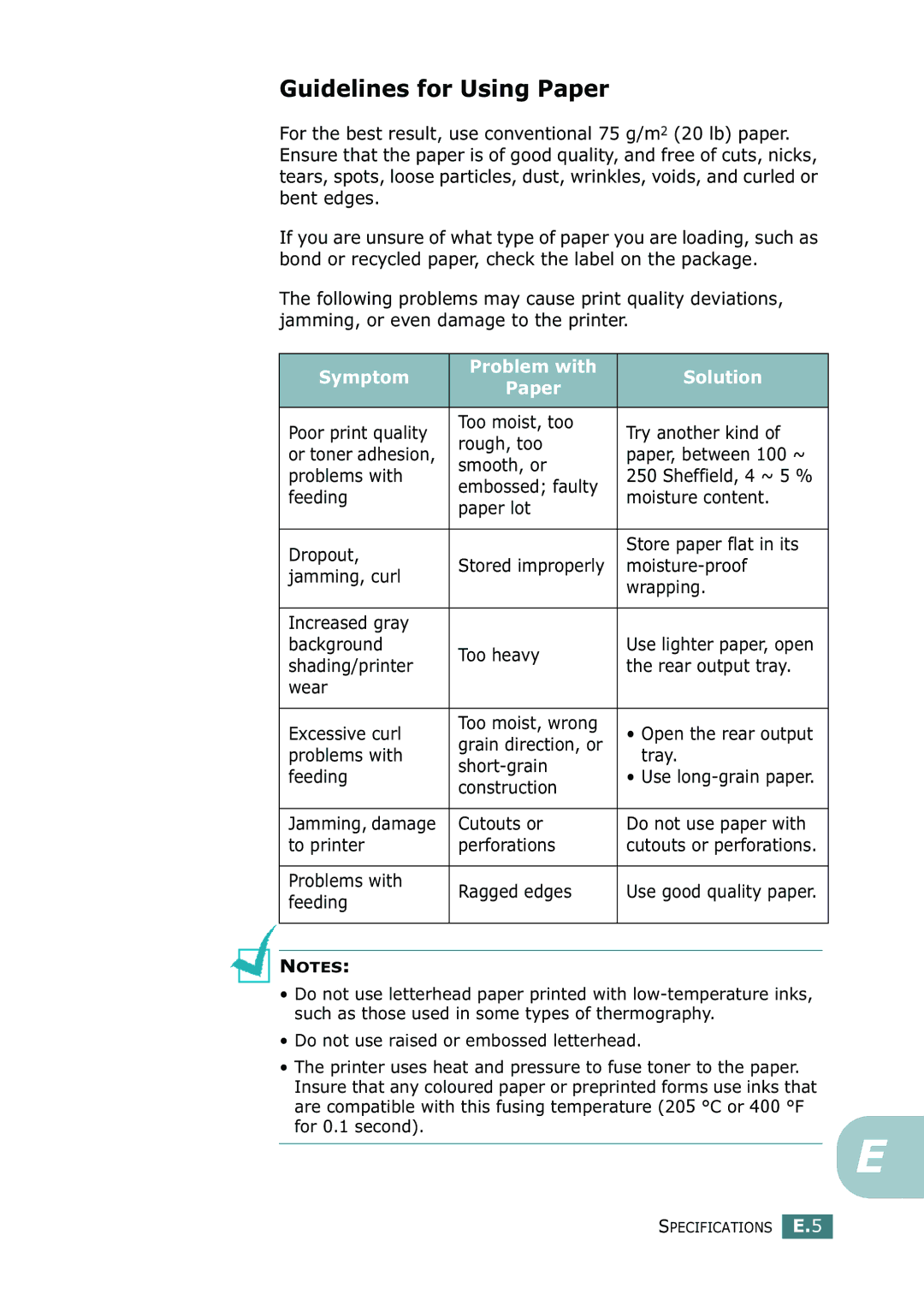
Guidelines for Using Paper
For the best result, use conventional 75 g/m2 (20 lb) paper. Ensure that the paper is of good quality, and free of cuts, nicks, tears, spots, loose particles, dust, wrinkles, voids, and curled or bent edges.
If you are unsure of what type of paper you are loading, such as bond or recycled paper, check the label on the package.
The following problems may cause print quality deviations, jamming, or even damage to the printer.
Symptom | Problem with | Solution | |
Paper | |||
|
| ||
|
|
| |
Poor print quality | Too moist, too | Try another kind of | |
rough, too | |||
or toner adhesion, | paper, between 100 ~ | ||
smooth, or | |||
problems with | 250 Sheffield, 4 ~ 5 % | ||
embossed; faulty | |||
feeding | moisture content. | ||
paper lot | |||
|
| ||
|
|
| |
Dropout, |
| Store paper flat in its | |
Stored improperly | |||
jamming, curl | |||
| wrapping. | ||
|
| ||
|
|
| |
Increased gray |
|
| |
background | Too heavy | Use lighter paper, open | |
shading/printer | the rear output tray. | ||
| |||
wear |
|
| |
|
|
| |
Excessive curl | Too moist, wrong | • Open the rear output | |
grain direction, or | |||
problems with | tray. | ||
feeding | • Use | ||
construction | |||
|
| ||
|
|
| |
Jamming, damage | Cutouts or | Do not use paper with | |
to printer | perforations | cutouts or perforations. | |
|
|
| |
Problems with | Ragged edges | Use good quality paper. | |
feeding | |||
|
| ||
|
|
|
NOTES:
•Do not use letterhead paper printed with
•Do not use raised or embossed letterhead.
•The printer uses heat and pressure to fuse toner to the paper.
Insure that any coloured paper or preprinted forms use inks that are compatible with this fusing temperature (205 °C or 400 °F for 0.1 second).
E
SPECIFICATIONS E.5
